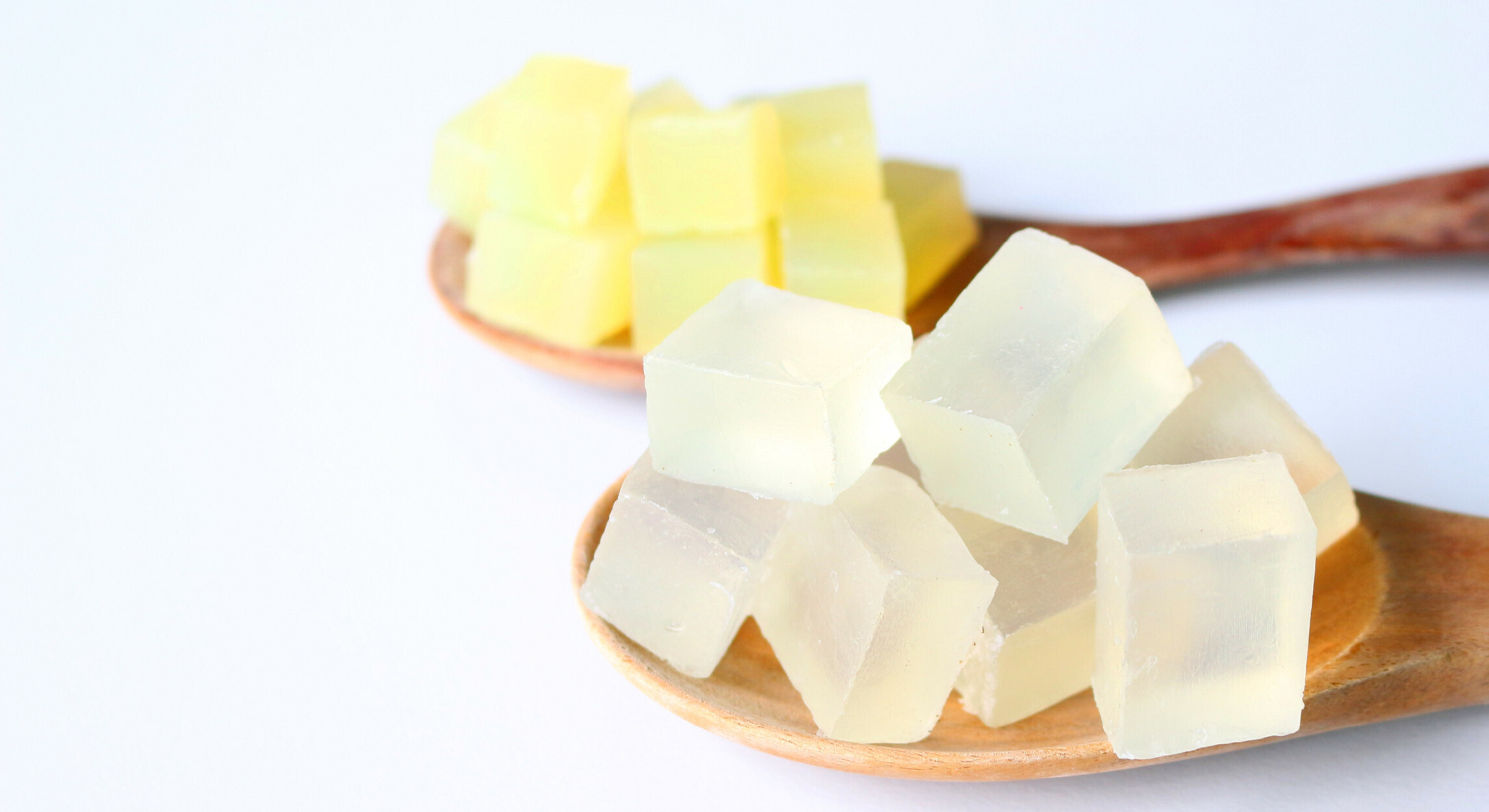Glycerine, also known as glycerol, is a simple but extremely versatile organic compound. It plays a crucial role in a multitude of industrial applications, particularly in cosmetics and wellness products. This article explores in depth the properties, uses and benefits of glycerine, as well as its importance in modern industry.
Properties and origins of glycerine
Glycerine is a trihydroxyalcohol, which means it has three hydroxyl groups (-OH). This chemical structure gives it unique properties such as solubility in water and a strong capacity to retain moisture. It is odourless, colourless and has a sweet taste. Historically, glycerine was discovered in the 18th century by Carl Wilhelm Scheele, a Swedish chemist, when he heated a mixture of olive oil and lead oxide. Since then, its production and use have grown considerably. Today, glycerine is derived mainly from two sources: biodiesel and vegetable oils.
Production process
Glycerine can be produced by a number of different methods, but the most common include saponification and transesterification. Saponification is a process that involves reacting a fat (such as a vegetable oil) with a strong base (such as caustic soda) to produce soap and glycerine. Transesterification is used primarily in the production of biodiesel, this method transforms the triglycerides in vegetable oils into methyl esters (biodiesel) and glycerine as a by-product. Technological advances have also made it possible to produce synthetic glycerine from propylene, although this method is less common due to the preference for natural sources.
Glycerine in cosmetic products
Glycerine is a humectant, which means it draws water to the skin. It helps maintain hydration, which is essential for healthy, radiant skin. It is found in products such as moisturisers, lotions and masks. What's more, by strengthening the skin barrier, glycerine helps prevent moisture loss and protects the skin from irritation caused by environmental aggressors. It is often used in formulations to treat conditions such as eczema and dermatitis because of its soothing properties. Finally, glycerine is also beneficial for the hair as it moisturises the scalp and hair, reducing frizz and dryness.
Glycerine in food supplements
As in cosmetics, glycerine is used to keep food products moist, preventing them from drying out. With its sweet taste and low glycaemic index, glycerine is used as a sweetener in certain foods for people watching their sugar intake. Finally, glycerine helps to stabilise formulations and thicken products, which is particularly useful in liquid food supplements.
Benefits for well-being
As well as its applications in cosmetics and food supplements, glycerine also has benefits for well-being. As an effective moisturiser, glycerine helps to treat skin dryness and improve skin texture. In culinary terms, because of its low glycaemic index, it can be used as an alternative to sugar for people with diabetes. Glycerine is generally considered safe for most applications. However, certain precautions need to be taken. Although rare, some people may develop skin irritations when using products containing glycerine. Also, if consumed in excess, glycerine can have laxative effects.
Thanks to its unique properties and versatility, glycerine plays a crucial role in the cosmetics, food supplements and wellness industries. Its ability to moisturise and protect the skin makes it a key ingredient in many skincare products. What's more, its use as a sweetener and stabiliser in food supplements underlines its importance in nutrition.










